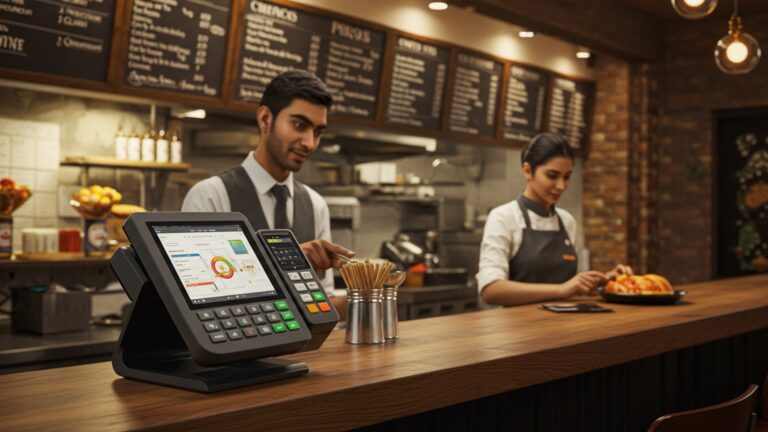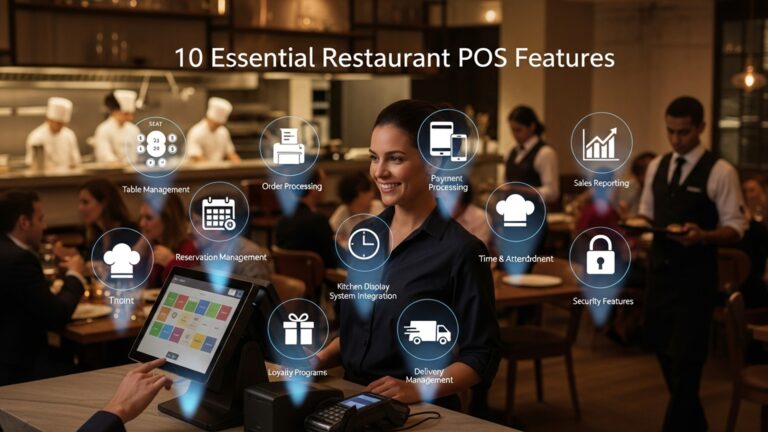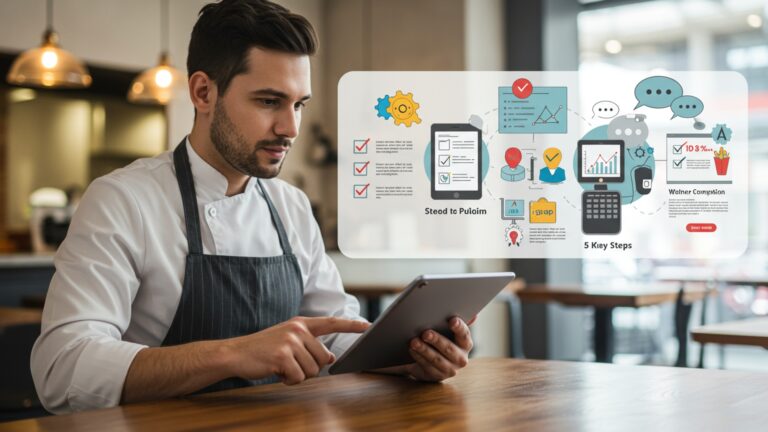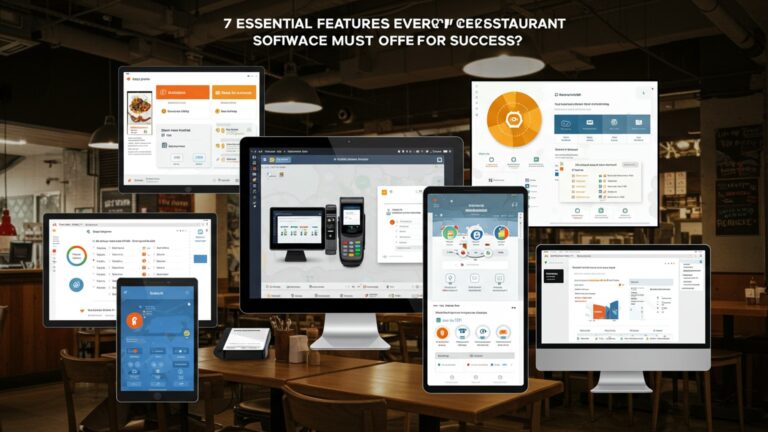How to Select Essential Features for Your Restaurant POS System Guide
In today’s hyper-competitive culinary landscape, a restaurant’s profitability and operational agility hinge significantly on its technology infrastructure, making the selection of a Point-of-Sale (POS) system a critical strategic decision, not merely a transactional one. The proliferation of advanced functionalities, from integrated online ordering and contactless payment processing to sophisticated kitchen display systems (KDS) and AI-driven inventory management, demands a discerning eye. Identifying the truly essential features of a restaurant POS becomes paramount for optimizing workflows, enhancing guest experiences with innovations like QR code ordering. leveraging real-time data analytics for smarter business growth, all while navigating the rapid shifts towards cloud-based solutions and mobile integration.
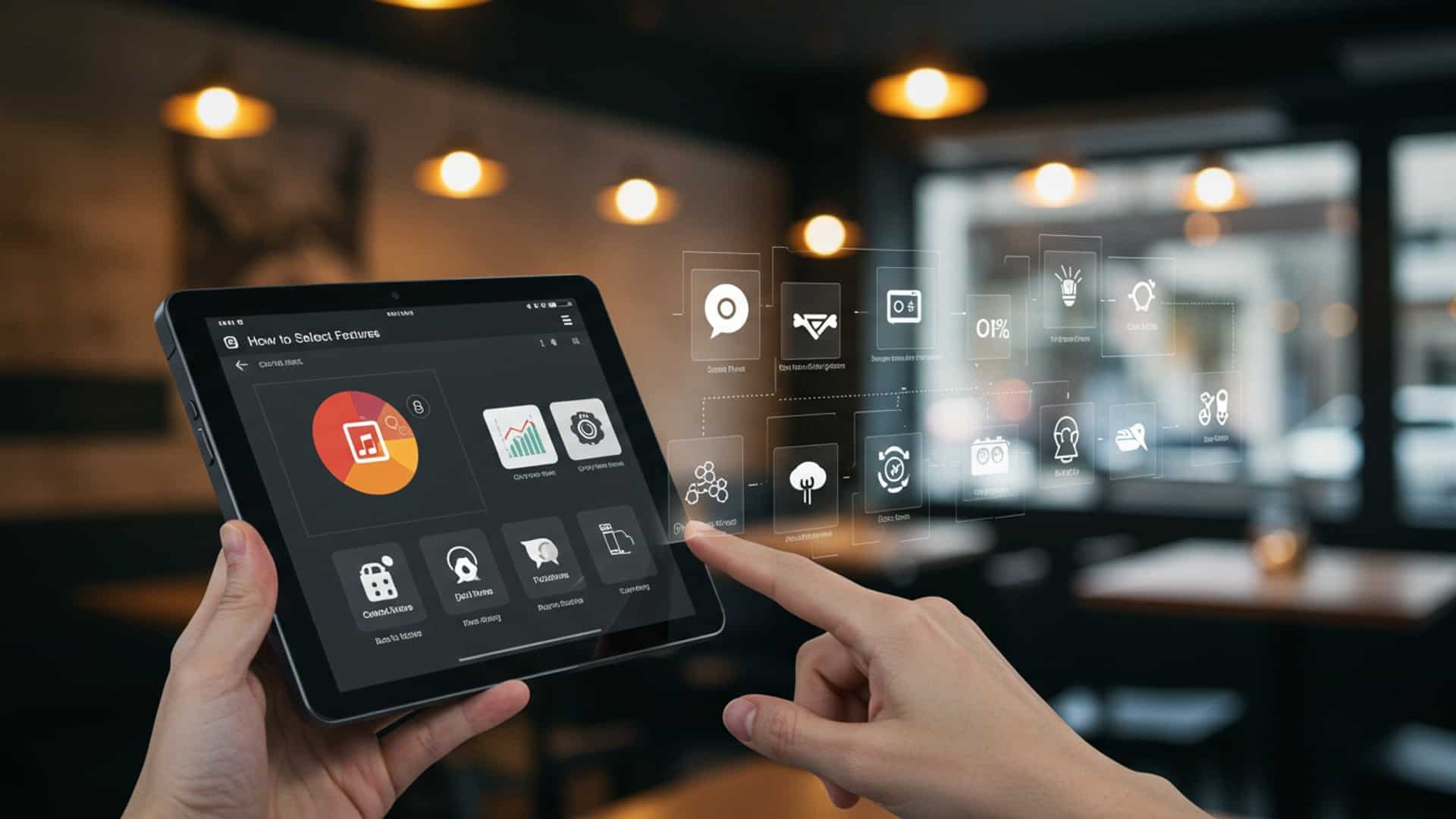
Understanding the Foundation: What is a Restaurant POS System?
At its core, a Restaurant Point of Sale (POS) system is far more than just a cash register. It’s a comprehensive software and hardware ecosystem designed to manage all aspects of your restaurant’s operations, from processing customer orders and payments to tracking inventory and analyzing sales data. In today’s fast-paced culinary world, a robust POS system is the central nervous system of any successful food establishment, streamlining workflows, enhancing customer experiences. providing critical insights for business growth. It has evolved from simple transaction terminals to intelligent platforms that can drastically improve efficiency and profitability.
The Non-Negotiables: Core Essential Features of Restaurant POS Systems
When evaluating the essential features of restaurant POS systems, certain functionalities stand out as absolutely critical for day-to-day operations. These are the foundational elements that empower your staff and keep your business running smoothly.
- Order Management
- Menu Customization and Modifiers
- Table Management
- Split Checks & Transfers
- Hold & Fire Functionality
- Payment Processing
- Integrated Card Processing
- Mobile Payment Options
- Gift Card & Loyalty Program Integration
- Secure Transactions
- Inventory Management
- Real-time Tracking
- Vendor Management & Purchase Orders
- Recipe Management
- Waste Tracking
- Reporting & Analytics
- Sales Reports
- Labor Reports
- Cost of Goods Sold (CoGS)
- Customer Data
- Employee Management
- Time Clock
- Shift Scheduling
- Permission Levels
This is where the magic happens. A top-tier POS allows for quick, accurate order taking, whether at the counter, table, or online.
Easily add, edit. remove menu items, adjust prices. manage modifiers (e. g. , “extra cheese,” “no onions”). This is crucial for adapting to seasonal changes or customer requests.
For sit-down restaurants, an intuitive visual layout of your dining room helps staff manage tables, track order status. seat guests efficiently.
The ability to easily split bills by item or evenly among guests. transfer orders between tables or servers, prevents common customer service headaches.
Especially in kitchens, holding orders and firing them at the right time ensures all dishes for a table arrive simultaneously and fresh.
Seamless and secure payment processing is paramount.
Directly process credit and debit cards, reducing manual entry errors and speeding up transactions. Look for EMV chip and NFC (contactless) compatibility.
Support for Apple Pay, Google Pay. other digital wallets caters to modern customer preferences.
Manage your own gift card sales and redemptions. integrate with loyalty programs to reward repeat customers.
PCI compliance and encryption are non-negotiable for protecting customer data and your business from fraud.
This feature directly impacts your bottom line by minimizing waste and optimizing stock levels.
Monitor ingredient usage as items are sold, providing accurate stock counts. Imagine a bustling pizzeria owner, Maria, who used to manually count her mozzarella sticks. With a POS, she now knows exactly how many she has left after every sale, preventing last-minute rushes to the supplier.
Track suppliers, manage pricing. generate purchase orders directly from the system.
Link menu items to specific ingredients and their quantities, allowing the system to deduct ingredients accurately.
Record spoiled or wasted items to get a true cost of goods sold and identify areas for improvement.
Data is power. a good POS provides actionable insights.
Daily, weekly, monthly sales breakdowns by item, category, employee. time of day. This helps identify peak hours and best-selling dishes.
Track employee hours, sales performance. tips.
comprehend your profitability per dish.
For restaurants with loyalty programs, track customer purchase history and preferences.
Simplify staff oversight and payroll preparation.
Digital clock-in/out functionality that integrates with payroll.
Some advanced systems offer basic scheduling tools.
Assign different access levels based on roles (e. g. , server, manager, kitchen staff).
Enhancing Operations: Advanced and Specialized POS Features
While the core features are essential, certain advanced functionalities can provide a significant competitive edge and cater to specific restaurant models. These go beyond the basic essential features of restaurant POS systems to truly optimize operations.
- Online Ordering & Delivery Integration
- First-Party Online Ordering
- Third-Party Delivery Aggregator Integration
- Kitchen Display Systems (KDS)
- Improved Communication
- Faster Prep Times
- Order Tracking
- Customer Relationship Management (CRM) & Loyalty
- Integrated Loyalty Programs
- Customer Database
- Feedback Management
- Multi-Location Management
- Centralized Menu & Pricing
- Consolidated Reporting
- Employee Management
- Reservations Management
- Online Booking
- Table Status & Waitlists
- Guest History
With the rise of food delivery, this is becoming increasingly vital.
An integrated platform allows customers to order directly from your website or app, saving on third-party commission fees. For example, “The Sandwich Spot,” a local deli, saw a 20% increase in profit margins after switching to its own integrated online ordering system, bypassing external platforms.
Seamlessly receive orders from platforms like Uber Eats, DoorDash. Grubhub directly into your POS, eliminating the need for separate tablets.
Replace paper tickets with digital screens in the kitchen.
Orders are instantly routed to the correct kitchen station.
Chefs can easily view, prioritize. mark orders as complete. This significantly reduces errors and speeds up service, especially during rush hours.
Managers can see average prep times and identify bottlenecks.
Building customer loyalty is key to long-term success.
Track customer visits, points. rewards directly through the POS.
Store customer contact details, preferences. purchase history for personalized marketing efforts.
Some systems allow for direct customer feedback collection.
For growing restaurant groups or franchises.
Manage menus and pricing across all locations from a single dashboard.
Gain a holistic view of sales, labor. inventory across your entire enterprise.
Manage staff across multiple locations more efficiently.
For fine dining or busy establishments.
Allow customers to book tables through your website or app.
Manage table availability and effectively handle walk-ins with digital waitlists.
Keep notes on customer preferences or special requests.
Seamless Connectivity: Integration Capabilities
A truly powerful restaurant POS system doesn’t operate in a silo. Its ability to integrate with other essential business tools is a crucial factor, enhancing data flow and reducing manual data entry. This interconnectedness allows you to maximize the value of your chosen essential features of restaurant POS.
- Accounting Software Integration
- Directly sync sales data, expenses. payroll details with popular accounting platforms like QuickBooks, Xero, or Sage. This eliminates tedious manual data entry and reduces the risk of errors, ensuring your financial records are always up-to-date.
- Payroll System Integration
- Connect your POS time clock data directly to your payroll provider. This streamlines the payroll process, accurately calculates wages, tips. overtime. saves significant administrative time each pay period.
- Marketing & Email Automation Tools
- Integrate with platforms like Mailchimp or CRM tools to leverage customer data for targeted marketing campaigns, sending promotions, birthday offers, or updates directly to your customer base.
- Third-Party API Access
- Some POS systems offer an Application Programming Interface (API), which allows custom integrations with unique tools or services specific to your restaurant’s needs. This provides flexibility and future-proofing.
Hardware Considerations: Beyond the Software
While we focus on software features, the physical components that bring your POS system to life are equally crucial. The right hardware ensures the smooth operation of the essential features of restaurant POS software.
- POS Terminals
- Traditional Terminals
- Tablet-Based Systems (e. g. , iPads)
- Printers
- Receipt Printers
- Kitchen Printers
- Cash Drawers
- Secure storage for cash transactions, typically triggered to open by the POS system.
- Card Readers
- Devices that read credit/debit cards, supporting EMV chips and contactless payments.
Robust, fixed stations often found at counters.
Offer mobility for tableside ordering, line busting. inventory checks. A food truck operator, for instance, relies heavily on a mobile, tablet-based POS to take orders and process payments quickly in a compact space.
For customer receipts.
For sending orders to different kitchen stations (though KDS often replaces these).
Future-Proofing Your Investment: Scalability and Support
Selecting a POS system isn’t just about your current needs; it’s about anticipating future growth and ensuring reliable operation. The best essential features of restaurant POS systems are those that can grow with you.
- Scalability
- Can the system easily accommodate additional terminals, locations, or features as your business expands? A cloud-based system often offers superior scalability compared to on-premise solutions.
- Cloud-Based vs. On-Premise
- Customer Support & Training
- 24/7 Support
- Onboarding & Training
- Reputation
This is a fundamental choice impacting cost, flexibility. maintenance.
| Feature | Cloud-Based POS | On-Premise POS |
|---|---|---|
| Data Storage | Remote servers, accessible anywhere with internet | Local servers within your restaurant |
| Accessibility | High (mobile devices, remote access) | Limited (tied to local network) |
| Upfront Cost | Lower (subscription model) | Higher (hardware, software license) |
| Maintenance & Updates | Handled by vendor (automatic) | Managed by restaurant or IT staff |
| Security | Managed by vendor (often robust) | Restaurant’s responsibility |
| Offline Mode | Many offer limited offline functionality, syncing when reconnected | Fully functional offline |
Restaurants operate beyond 9-5, so reliable, round-the-clock support is vital for troubleshooting during peak hours.
Comprehensive training for new staff and ongoing resources (knowledge base, tutorials) ensure everyone can use the system effectively.
Research vendor reviews regarding their support quality. A quick search for “POS vendor support reviews” can reveal a lot about their reliability.
Making the Right Choice: Actionable Steps for Selection
Navigating the myriad of options can be daunting. Here’s a structured approach to help you select the essential features of restaurant POS that align best with your business.
- Assess Your Specific Needs
- Restaurant Type
- Budget
- Current Challenges
- Team Size & Tech-Savviness
- Prioritize Essential Features of Restaurant POS
- Based on the categories above, list your absolute must-have features. Then, list your ‘nice-to-have’ features. Be realistic about what you truly need versus what might be overkill for your current stage.
- Request Demos and Free Trials
- Don’t just read brochures. Get hands-on with a few top contenders. Run through typical scenarios, from taking an order to processing a refund. Involve key staff members in the demo process to get their feedback.
- Read Reviews & Seek Referrals
- Look for reviews from other restaurant owners in your niche. Speak to colleagues or mentors who have recently implemented a new POS system. Their real-world experience can be invaluable.
- grasp the Total Cost of Ownership (TCO)
- Beyond the monthly subscription or upfront purchase, consider costs for hardware, installation, training, ongoing support. potential transaction fees. A seemingly cheaper system might have hidden costs that add up.
A quick-service cafe needs different features than a fine-dining establishment or a food truck.
Determine your upfront and recurring budget for both hardware and software.
Identify the biggest pain points in your current operations (e. g. , slow order taking, inventory inaccuracies) that a new POS should solve.
Consider how easily your staff will adapt to a new system.
Conclusion
Selecting the essential features for your restaurant POS isn’t merely a checklist exercise; it’s a strategic investment in your establishment’s future. The real magic happens when features like robust inventory management, which my own kitchen managers swear by, seamlessly integrate with modern demands such as dynamic online ordering and contactless payment processing. This isn’t just about having a system; it’s about having the right system that truly resonates with your unique operational flow, preventing future headaches and boosting daily efficiency. My personal tip? Prioritize scalability and user-friendliness. A powerful system with a steep learning curve can hinder rather than help. As the industry continues to evolve with trends like AI-driven customer insights and predictive inventory, regularly revisit your chosen features. Don’t be afraid to trial different solutions, perhaps even a demo of advanced analytics capabilities, to ensure your POS isn’t just a transaction tool but a growth engine. Embrace this decision as an opportunity to streamline, innovate. ultimately, elevate your guest experience.
More Articles
How to Choose the Right Restaurant POS System 10 Key Steps to Guide You
10 Essential Restaurant POS Features Every Owner Needs to Master
7 Essential Features Every Restaurant POS Software Must Offer for Success
Learn 8 Best Practices for Maximizing Your Restaurant POS System Investment Today
How to Master Essential Restaurant POS Features for Seamless Service
FAQs
Where do I even begin when picking POS features for my restaurant?
Start by zeroing in on your core operations. What are the absolute must-haves for taking orders, processing payments. managing tables or counter service? Don’t get sidetracked by flashy add-ons until these fundamental processes are covered and work seamlessly for your specific type of restaurant.
How do I figure out which features my restaurant truly needs versus just wants?
Begin by listing your current daily workflows and any pain points. Does your existing setup struggle with split checks, inventory tracking, or integrating online orders? Prioritize features that directly solve these issues, improve efficiency, or enhance the customer experience. Think about what your staff actually uses every day and what would make their jobs easier.
What are some absolute must-have features for almost any restaurant POS?
You’ll definitely need efficient order entry (whether it’s table service, quick service, or delivery), integrated payment processing, basic inventory management, employee time tracking. comprehensive sales reporting. These features form the essential backbone for managing your daily operations effectively.
How much should my budget influence the features I choose?
While your budget is crucial, try not to let it be the only deciding factor. Prioritize essential features that offer the best return on investment for your specific restaurant model. Sometimes, investing a little more in a system with robust inventory or strong CRM capabilities can save you money and headaches down the road. Look for flexible options that allow you to add features as your business grows.
I’m planning to expand my business soon. How do I pick a POS that can grow with me?
Look for systems that are inherently modular and scalable. Can you easily add more terminals, new locations, or integrate with new services (like online ordering platforms or loyalty programs) without needing a complete system overhaul? Cloud-based POS solutions often provide more flexibility and simpler expansion capabilities compared to traditional on-premise setups.
Are there any commonly overlooked but super useful features I should consider?
Absolutely! Features like detailed analytics and reporting (to spot trends and control costs), customer relationship management (CRM) for loyalty programs, seamless integration with third-party delivery services. robust kitchen display systems (KDS) can significantly boost efficiency and profitability, even if they aren’t the first things that come to mind.
Do different restaurant types really need different features?
Yes, absolutely! A quick-service restaurant will prioritize lightning-fast order entry and strong online ordering integration, whereas a fine dining establishment might focus on advanced table management, reservation systems. detailed inventory for wine or liquor. A bar, on the other hand, will lean heavily on drink management and efficient tab handling. Always tailor your feature set to your specific service model.

